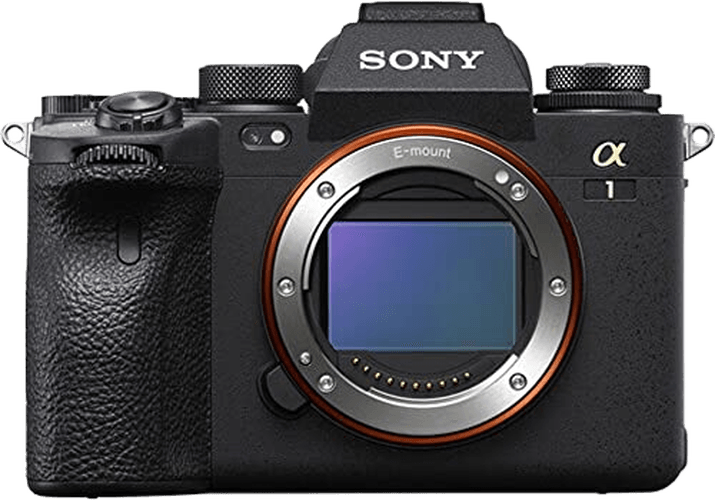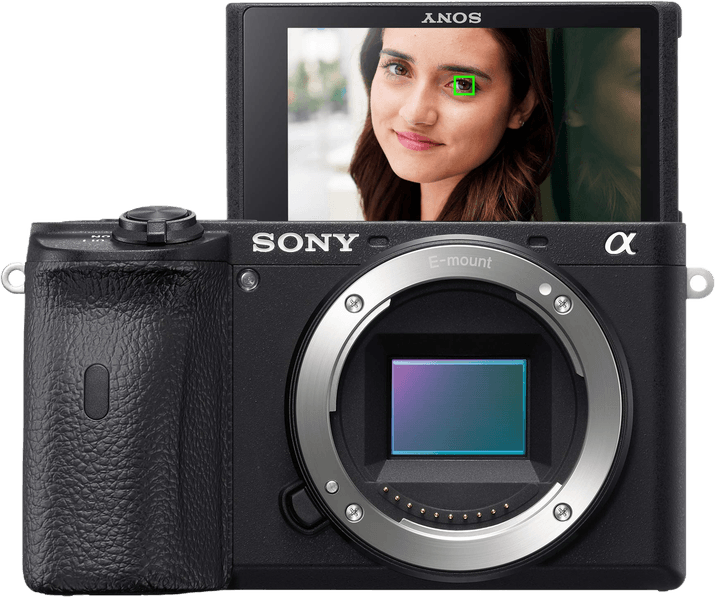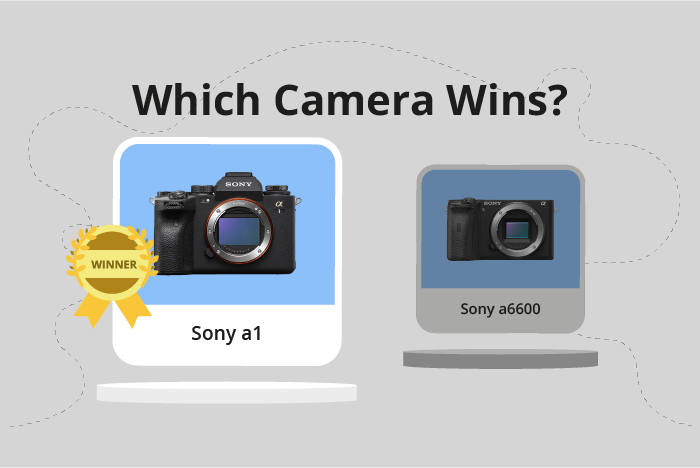Sony a1 vs a6600 Comparison
Sony a1

Sony a6600

The Sony a1 outshines the Sony a6600 with a score of 86/100, while the a6600 trails behind with 75/100. Both cameras are mirrorless and have been released within the past few years, with the a1 being launched in 2021 and the a6600 in 2019. They share similar dimensions, with the a1 measuring 129 x 97 x 81mm and the a6600 at 120 x 67 x 69mm.
The a1’s higher score is due to its superior performance and features. However, the a6600 has its advantages, such as its lower launch price of $1200 compared to the a1’s $6499, and its lighter weight of 503g versus the a1’s 737g.
Taking into account the specifications and scores, the Sony a1 is the better camera for those seeking top-notch performance, while the Sony a6600 offers a more affordable and lightweight option for users with different priorities.
Sony a1 vs a6600 Overview and Optics
The Sony a1 outperforms the Sony a6600 in optics, scoring 89/100 compared to the a6600’s 76/100. Both cameras share some similarities in their specifications, such as having a CMOS sensor, image stabilisation, and a similar lens mount (Sony FE for the a1 and Sony E for the a6600).
The Sony a1 has a higher resolution with 50.1 megapixels, which allows for more detail and better image quality. Its shooting speed of 30 frames per second is almost three times faster than the a6600’s 11 frames per second, making it ideal for capturing fast-moving subjects. The a1’s dual Bionz XR processor ensures faster processing and better performance. Its full-frame sensor size and higher DXOMARK score of 98 contribute to its superior image quality.
On the other hand, the Sony a6600 has a lower resolution of 24.2 megapixels and a slower shooting speed. Its Bionz X processor is less advanced, and its APS-C sensor size is smaller than the a1’s full-frame sensor. However, the a6600 still offers adequate performance for most photography needs, and its image stabilisation feature ensures sharp images.
While the Sony a6600 may be sufficient for general photography, the Sony a1’s superior optics make it the better choice for professional photographers and those who demand the highest image quality. The a1’s higher resolution, faster shooting speed, and advanced processor contribute to its higher score and overall better performance in the optics category.
Sony a1 vs a6600 Video Performance
The Sony a6600 emerges as the winner in video capabilities, scoring 91/100, while the Sony a1 follows closely with a score of 86/100. Both cameras share some common specifications, such as having 4K video resolution, with the Sony a6600 maxing out at 3840 x 2160 and the Sony a1 offering an even higher resolution of 8K (7680 x 4320).
The Sony a1 surpasses the a6600 in terms of video resolution and max video frame rate, as it can record at a stunning 8K resolution and boasts a maximum video frame rate of 120fps. This makes the a1 an excellent choice for capturing high-quality, detailed footage and smooth slow-motion videos.
On the other hand, the Sony a6600 outperforms the a1 in certain aspects. The a6600 has a built-in time-lapse functionality, which allows for creative and dynamic time-lapse videos without the need for additional software or accessories. Additionally, with a video score of 91, the a6600 delivers impressive video performance despite its lower max resolution and frame rate when compared to the a1.
In terms of video capabilities, the Sony a1 excels in resolution and frame rate, making it suitable for professionals and enthusiasts seeking top-notch video quality and slow-motion capabilities. However, the Sony a6600 offers a superior overall video performance and the added benefit of built-in time-lapse functionality, making it an attractive option for those who prioritize these features.
Sony a1 vs a6600 Features and Benefits
The Sony a1 outperforms the Sony a6600 in features with a score of 83/100 compared to the latter’s 81/100. Both cameras have several common specifications, including a 3-inch screen, touchscreen capability, flip screen, absence of GPS, and presence of WIFI and Bluetooth.
The Sony a1 excels with a higher screen resolution of 1,440,000 dots, providing clearer and more detailed image previews. This advantage enhances the user’s experience, making it easier to review captured images and ensuring optimal results.
On the other hand, the Sony a6600 has a lower screen resolution of 921,600 dots, which may result in less detailed image previews. However, this difference in resolution does not necessarily diminish the camera’s overall performance. The a6600 still offers excellent image quality and shares many features with the a1, making it a competitive option in the market.
While the a1 takes the lead in terms of features, it is essential to consider individual preferences and requirements when choosing a camera. The Sony a6600 remains a viable option for users who prioritize other aspects such as price or compactness. Ultimately, both cameras offer impressive capabilities, and the decision should be based on personal needs and expectations.
Sony a1 vs a6600 Storage and Battery
The Sony a1 outperforms the Sony a6600 in storage and battery with a score of 73/100 compared to 48/100. Both cameras utilize the NP-FZ100 battery type and offer USB charging capabilities. However, the Sony a1 surpasses the a6600 with its dual memory card slots that accept SD and CFexpress Type A cards, while the a6600 has only one slot compatible with SD, SDHC, SDXC, and Memory Stick Pro Duo cards.
The Sony a1’s superior storage options provide more flexibility and capacity for photographers. Despite this advantage, the Sony a6600 excels in battery life, delivering 810 shots per charge compared to the a1’s 530 shots. This longer battery life makes the a6600 more suitable for extended shooting sessions.
Considering both storage and battery capabilities, the Sony a1 proves to be the better choice for those prioritizing storage options and versatility. However, the Sony a6600 remains a viable option for users who value longer battery life for uninterrupted shooting experiences.
Sony a1 vs a6600 – Our Verdict
Are you still undecided about which camera is right for you? Have a look at these popular comparisons that feature the Sony a1 or the Sony a6600:

